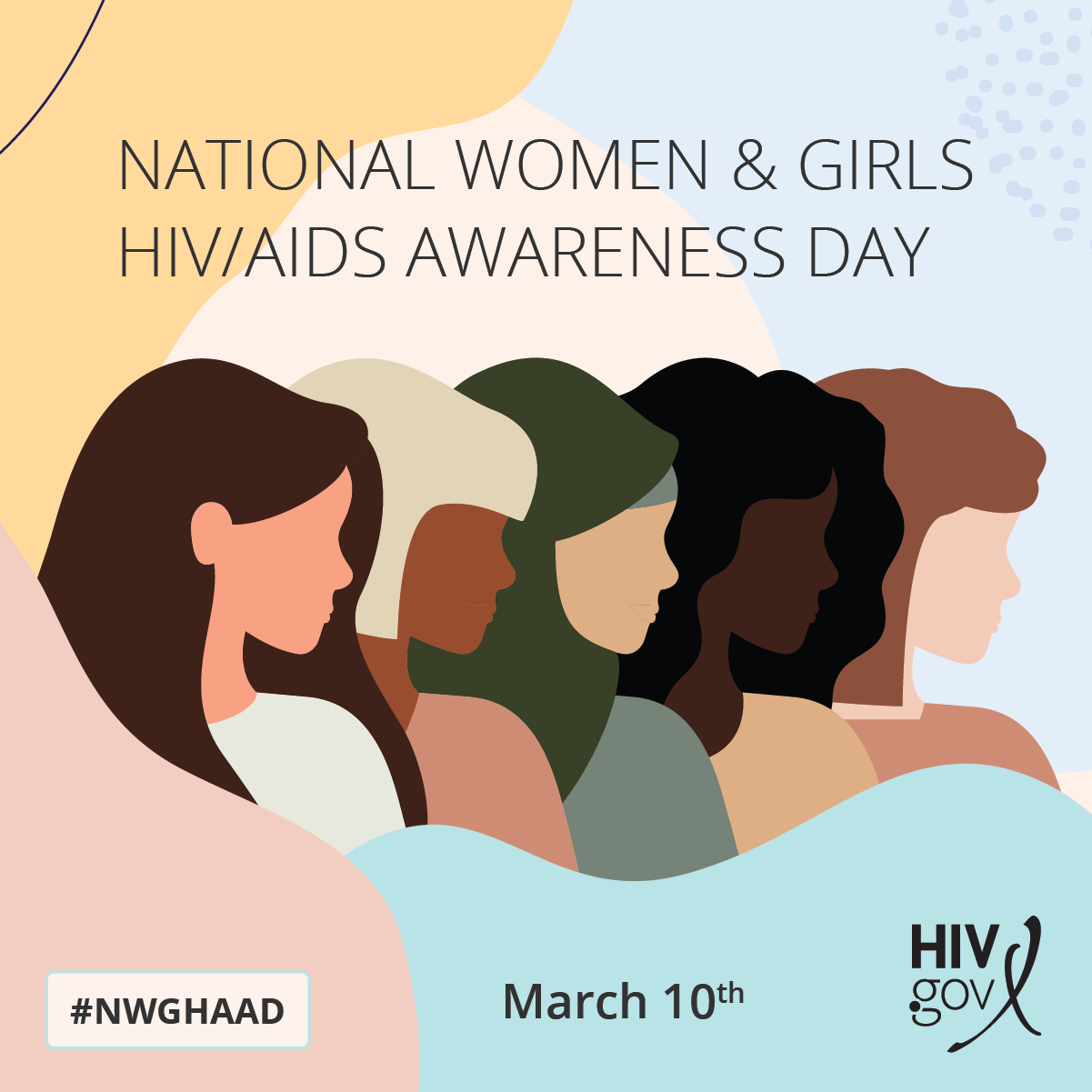March 10, 2022 – Today, CHIPTS honors National Women and Girls HIV/AIDS Awareness Day (NWGHAAD), a day dedicated to raising awareness about the impact of HIV on women and girls and showing support for women and girls with HIV. In honor of NWGHAAD, CHIPTS Policy Impact Core Scientist Dr. Dilara Üsküp shares a reflection highlighting the disproportionate impact of HIV on Black and Latina women and girls, and offering solutions to better serve women, girls, and their families with HIV prevention and care.
National Women and Girls HIV/AIDS Awareness Day 2022
BLACK AND LATINA WOMEN AND GIRLS ARE STILL DISPROPORTIONATELY IMPACTED BY HIV/AIDS.
BLACK AND LATINA WOMEN AND GIRLS ARE STILL DISPROPORTIONATELY IMPACTED BY HIV/AIDS.
BLACK AND LATINA WOMEN AND GIRLS ARE STILL DISPROPORTIONATELY IMPACTED BY HIV/AIDS.
 On this National Women and Girls HIV/Awareness Day, enough is enough. Women, girls, their families, and communities deserve more from HIV/AIDS healthcare professionals, researchers, public health officials, and public servants.
On this National Women and Girls HIV/Awareness Day, enough is enough. Women, girls, their families, and communities deserve more from HIV/AIDS healthcare professionals, researchers, public health officials, and public servants.
In the United States, HIV diagnoses among women have been declining over recent years, yet Black and Latina women and girls continue to experience disproportionately high rates of HIV infection compared to White women. In 2019, the rate of HIV diagnoses among Hispanic/Latina women (5.3 per 100,000) was 3 times higher than that of White women (1.7 per 100,000) (CDC, 2019). Here in Los Angeles County (LAC), Black women had higher rates of HIV diagnosis compared with all other racial and ethnic groups. The highest rates for women were seen in the Central, South, Long Beach, Southwest, and Inglewood Health Districts.
While the number of HIV-positive pregnant women in LAC has decreased over time, the number of perinatal HIV transmissions has been increasing since 2017. In 2020, there were four infants who acquired HIV perinatally. Four transmissions are four too many. Perinatal HIV transmission can be dramatically reduced when women have access to and start HIV medications early on while conceiving and throughout their pregnancy. In these cases of perinatal infection in LAC, we know what contributed to this outcome. These four women were experiencing homelessness and could not access care. We know the systemic and individual causes, and the social determinants of health: poverty, racism in the healthcare setting, medical mistrust, fear of discrimination, experiences of violence, lack of access to sexual and reproductive health care services, difficulty negotiating safer sexual encounters with partners, lack of access to unused needles, lack of access to medical care coordination, and the epidemic of homelessness preventing women and girls from accessing testing and treatment.
As the COVID-19 pandemic (hopefully) reaches the point of endemic, the US is in a historical moment where there are unprecedented economic and health disparities facing those who are living at or below the poverty line. Women and girls who are living at or below the poverty line, and who are also Black and Latina, experience intersectional issues of marginalization including structural racism and systemic inequality which prevent them from being able to practice HIV-risk reduction strategies and access HIV/AIDS-related care. We have failed women and girls in this way.
We know the barriers, and we also know the solutions. We must ensure the behavioral tools that we already have support access, retention, and persistence to HIV prevention and care with a range of approaches. We know what works and largely for whom it does and does not work! In the case of pre-exposure prophylaxis (PrEP), for instance, PrEP is a highly efficacious biomedical HIV prevention strategy, yet uptake is low among women. In 2019, only 9.7% of women with an indication for PrEP in the US were using it — especially Black and Latina women who present clear indications based on reported sexual risk behaviors. We know the wide variety of reasons Black and Latina women are not using PrEP, including systemic, social, and individual barriers such as lack of PrEP knowledge and awareness, medication/lab costs, stigma experienced during in-person medical visits, concerns about side effects, challenges with daily medication adherence, low self-perceived HIV risk, provider bias, medical mistrust, and interpersonal violence, among many other factors. In healthcare settings, women may also experience provider bias when trying to access PrEP.
Next, treatment as prevention (TasP) and the U=U (Undetectable=Untransmittable) concept also play important roles in HIV/AIDS prevention among women and girls. However, while some segments of the population can avail themselves of and adhere to biomedical HIV prevention approaches without extensive support, for a significant minority, the disorganizing effects of substance use, housing instability, food insecurity, and other psychosocial and structural conditions render them unable to prioritize sexual health as something requiring attention at any level. Disorganizing effects of substance use and mental health disorders are intimately linked with deficits in relevant HIV outcomes.
We do not necessarily have to find new tools for our HIV behavioral prevention toolbox. Instead, we must address embedded structural racism, sexism, and poverty in the health system to provide equitable access, especially among women and girls who are the most vulnerable. We must also consider strategies to more effectively implement HIV care and prevention efforts to reach women and girls most in need, including the development of technological improvements and investment in innovative care technologies such as on-demand mobile health, telehealth, and asynchronistic care.
We know the problems, we know the solutions, we know the implementation strategies. It is time for us to act.

